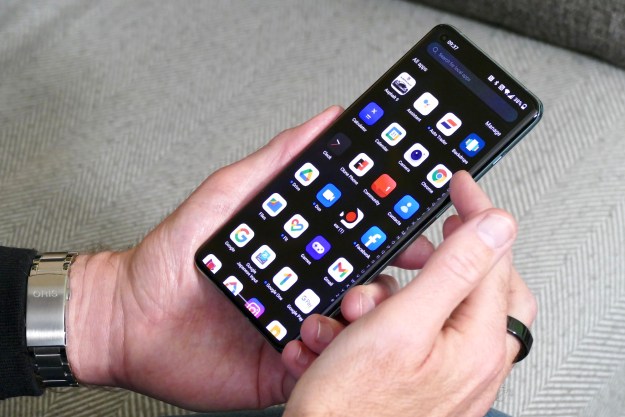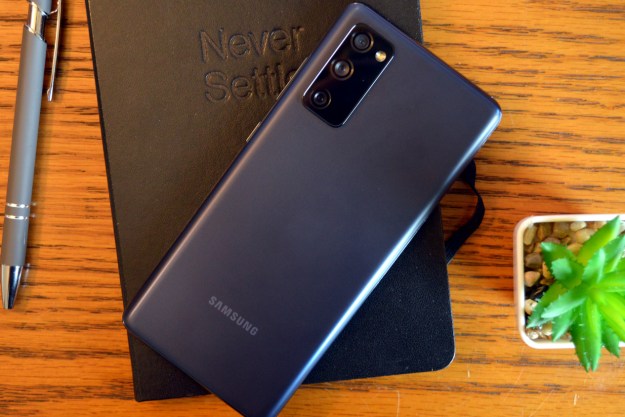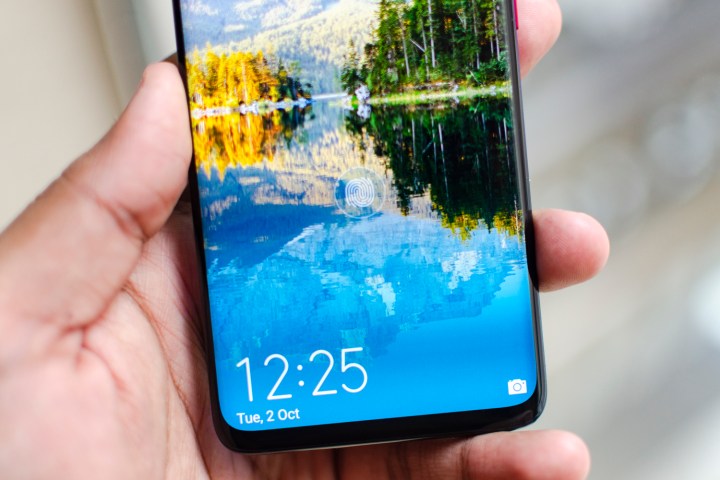
Following the flurry of awesome flagships like the Pixel 3 XL, Samsung Galaxy Note 9, and iPhone XS Max making their way to store shelves, Huawei is releasing its latest contender. Though the Huawei Mate 20 Pro is a little late to the game, it packs some incredible specs.
So how does the Huawei Mate 20 Pro compare to Samsung’s latest darling, the Galaxy Note 9? We put the two smartphones to the test to find out.
Specs
| Huawei Mate 20 Pro | Samsung Galaxy Note 9 | |
| Size | 157.8 x 72.3 x 8.6 mm (6.22 x 2.85 x 0.34 inches) | 161.9 x 76.4 x 8.8 mm (6.37 x 3.01 x 0.35 inches) |
| Weight | 189 grams (6.66 oz) | 201 grams (7.09 ounces) |
| Screen size | 6.4-inch AMOLED display | 6.4-inch Super AMOLED display |
| Screen resolution | 3,120 x 1,440 (538 pixels-per-inch) | 2,960 x 1,440 pixels (516 pixels-per-inch) |
| Operating system | Android 9.0 Pie | Android 8.1 Oreo |
| Storage space | 128GB | 128GB, 512GB |
| MicroSD card slot | No – features proprietary Nano Memory Card | Yes |
| Tap to pay services | Google Pay | Google Pay |
| Processor | Kirin 980 | Qualcomm Snapdragon 845 |
| RAM | 6GB | 6GB, 8GB |
| Camera | Triple sensor 40MP and 20MP and 8MP rear, 24MP front | Dual sensor 12MP rear, 8MP front |
| Video | 2,160p at 30 frames per second, 1,080p at 60 fps, 720p at 960 fps | 2,160p at 60 frames per second, 1,080p at 240 fps, 720p at 960 fps |
| Bluetooth version | Bluetooth 5.0 | Bluetooth 5.0 |
| Ports | USB-C | USB-C, Headphone Jack |
| Fingerprint sensor | Yes (In-display) | Yes (back) |
| Water resistance | IP68 | IP68 |
| Battery | 4,200mAh | 4,000mAh |
| App marketplace | Google Play Store | Google Play Store |
| Network support | TBD | T-Mobile, AT&T, Verizon, Sprint |
| Colors | Emerald Green, Midnight Blue, Twilight, Pink Gold, Black | Ocean Blue, Lavender Purple, Midnight Black, Metallic Copper |
| Price | 1,049 Euros (around $1,220) | $1,000 |
| Buy from | Huawei | AT&T, Verizon, T-Mobile, Sprint, Amazon , Samsung |
| Review score | Hands-on | 4 out of 5 stars |
Performance, battery life, and charging
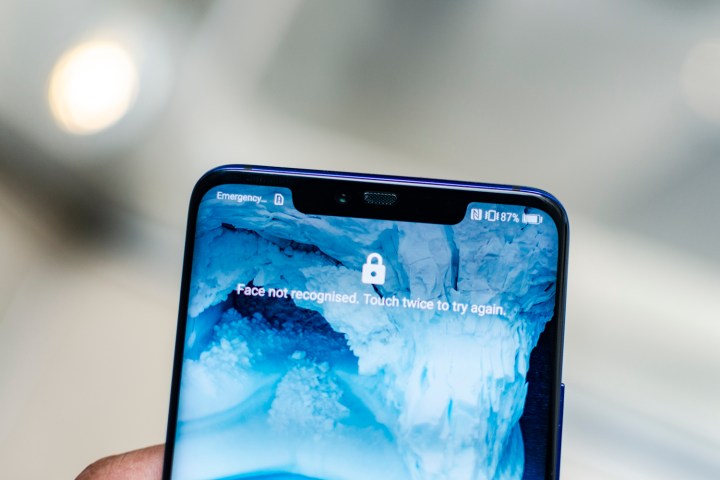
Looking for power? You’re in luck because the Huawei Mate 20 Pro and Samsung Galaxy Note 9 have plenty to spare.
Inside the Huawei Mate 20 Pro you’ll find the Kirin 980 processor along with 6GB of RAM. Storage comes in at 128GB with an option to add an additional 256GB via a proprietary Nano Memory Card. Overall, Huawei claims you’ll see a 20 percent speed improvement with the Kirin 980 chip compared to its predecessor along with a 40 percent increase in power efficiency.
The Samsung Galaxy Note 9 has a Snapdragon 845 processor with 6GB of RAM for the 128GB storage configuration and 8GB of RAM for the 512GB option; if neither option provides enough storage, you can always add 512GB of storage via the Micro SD card slot. Either way, Samsung’s found a winning combination as it’s one of the highest scoring phones ever in our benchmark testing.
In terms of battery capacity, the Mate 20 Pro has a slight edge at 4,200mAh compared to the Note 9’s 4,00mAh battery. We’ve not had a chance to put the Mate 20 Pro to the test just yet, but Huawei typically fares better in overall battery life compared to Samsung.
What really seals the deal for this category however is charging. On the Galaxy Note 9 you’ll find the fairly standard Quick Charge 2.0 along with Qi wireless charging at 7.5W. Comparatively, the Mate 20 Pro features super fast charging via its 40W adapter along with Qi wireless charging and reverse wireless charging, meaning it can charge up another phone wirelessly.
We’re tentatively giving this round to the Huawei’s Mate 20 Pro. In addition to what’s reported to be a beefier processor and more efficient battery, it also has more innovative charging options. We’ll put the Mate 20 Pro through the wringer in our review and update this section if necessary.
Winner: Huawei Mate 20 Pro
Design and durability
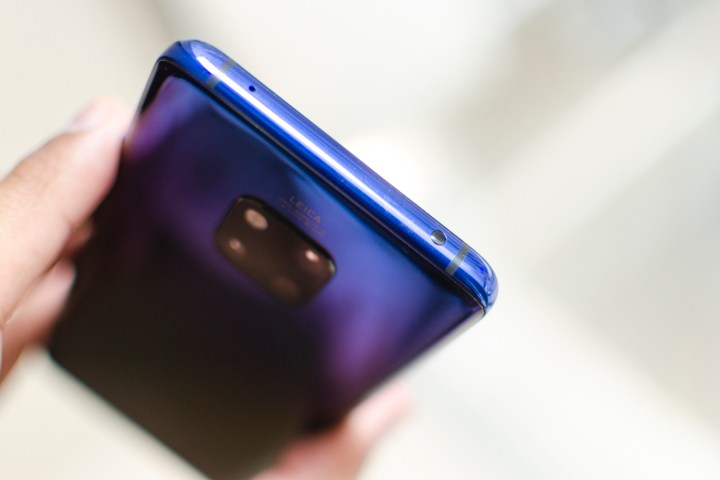
It goes without saying that you expect great specs on a flagship smartphone, but aesthetics and durability certainly can’t be ignored. Both Samsung and Huawei make gorgeous phones, so let’s see how these two compare.
On the front of the Huawei Mate 20 Pro you’ll find a curved 6.4 inch screen with the ever popular notch at the top of the phone and slight bezel at the bottom. Flip the phone over and the first thing you’ll notice is the camera module; it’s square and a little awkward, especially when compared to the Huawei P20 Pro. And on the Midnight Blue and Emerald Green versions of the Mate 20 Pro the glass has been etched into what Huawei calls a Hyper Optical pattern to minimize fingerprints on the phone and add extra grip. If that’s not your forte, the other three color options have the traditional glass back.
The Samsung Galaxy Note 9 is a traditional glass sandwich. On the front there’s a curved 6.4-inch screen with minimal bezels. The back is pretty nondescript with a dual camera setup and fingerprint sensor.
In terms of durability, there’s not much difference between the phones. Both are constructed of hardened glass and feature an IP68 rating to protect against water and dust. For either phone, you’ll definitely want to invest in a case.
In the end, both phones have their own unique design aesthetic that makes them each appeal to different people. And durability is a wash, so we’re calling this round a tie.
Winner: Tie
Display
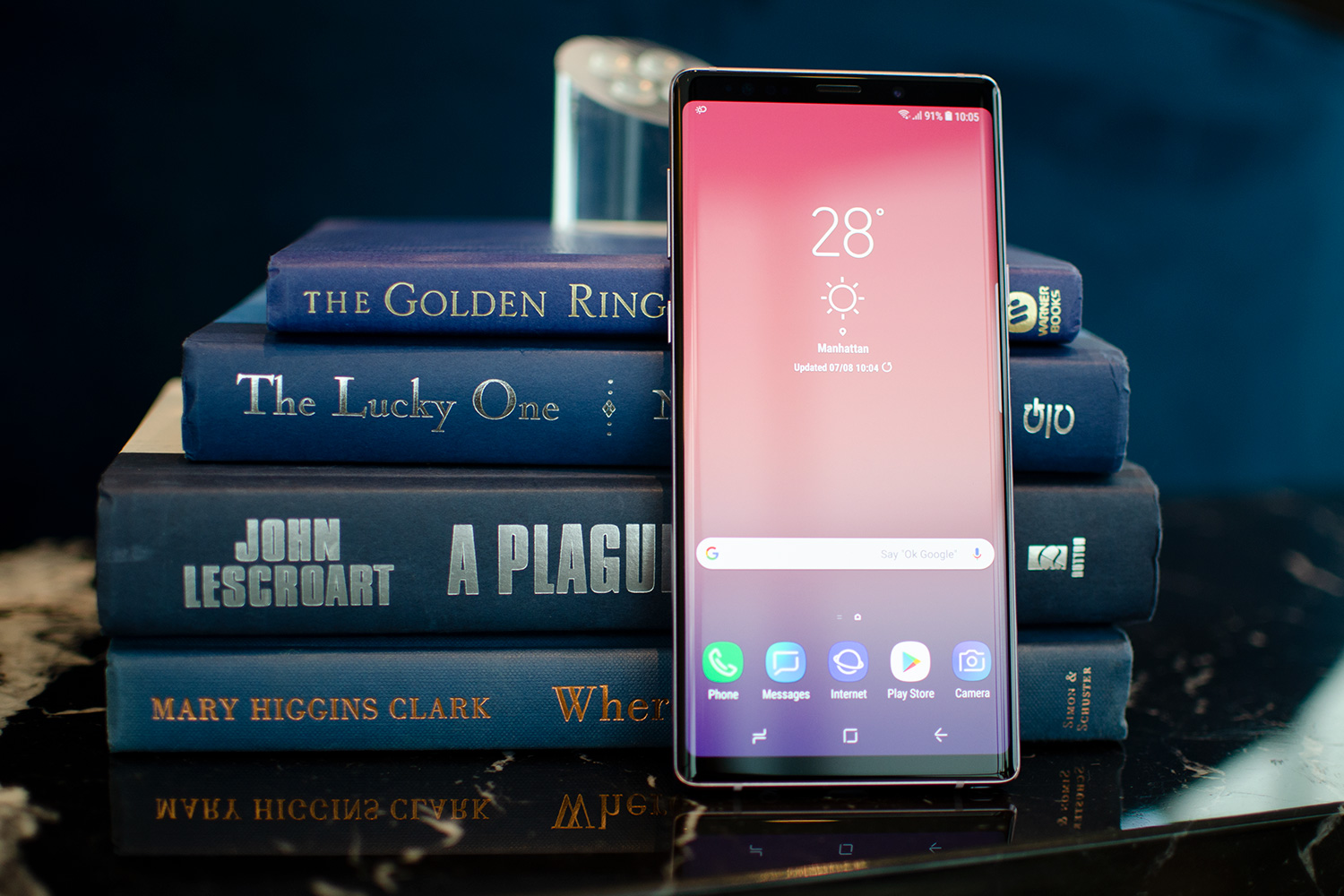
When it comes to exquisite displays, you can’t go wrong with either the Huawei Mate 20 Pro or the Samsung Galaxy Note 9. In fact there are more similarities than differences between the two phones for this category.
The Huawei Mate 20 Pro has a notched, 6.39-inch OLED display with a resolution of 3,120 x 1,440 pixels. The aspect ratio for the phone is 19.5:9. The Samsung Galaxy Note 9 has a 6.4-inch OLED display with a resolution of 2,960 x 1,440 pixels. The aspect ratio is similar at 18:5, but the Mate 20 Pro’s screen is slightly wider because of the notch.
This round is a tie. You can’t go wrong with either display and we believe most people will not notice any real difference between the two.
Winner: Tie
Camera
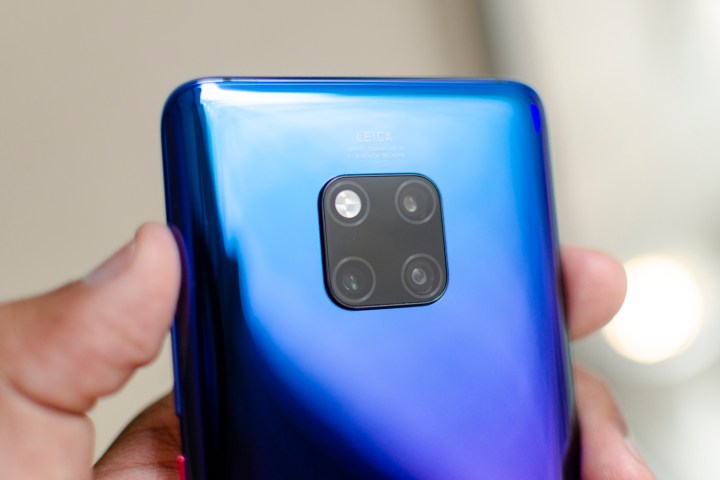
Huawei and Samsung have some of the best smartphone cameras on the market. But who wins when you pit the Mate 20 Pro against the Galaxy Note 9?
On the Huawei Mate 20 Pro, you’ll find a triple camera module with 40, 20, and 8-megapixel lenses. Huawei used a 27mm wide angle lens for the primary camera with an f/1.8 aperture. The secondary 16mm Ultra Wide Angle lens has an f/2.2 aperture, while the tertiary camera has an 80mm telephoto lens with an aperture of f/2.4 and Optical Image Stabilization (OIS). The front-facing camera comes in at 24 megapixels with an f/2.0 lens.
The Samsung Galaxy Note 9, on the other hand, has a 12 megapixel dual camera array. What’s most exciting about the Note 9, though, is the f/1.5-2.4 variable aperture that allows you to get great shots in any light. The front camera on the Note 9 is no slouch either, coming in at 8 megapixels with a wide f/1.7 aperture.
Right now, we’re giving Huawei the win for this category. Huawei’s flagships have historically had excellent cameras and we believe the Mate 20 Pro will continue in that tradition. That said, we still need to do more camera tests on the Huawei Mate 20 Pro and will update this category if needed.
Winner: Huawei Mate 20 Pro
Software and updates
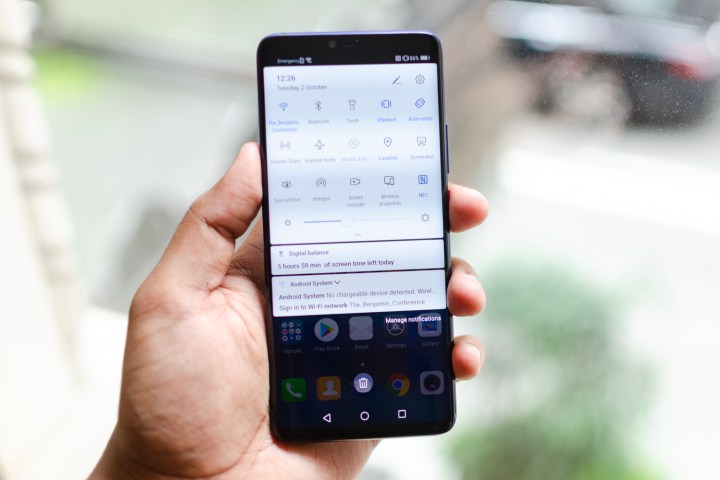
Both the Huawei Mate 20 Pro and Samsung Galaxy Note 9 are Android phones, but neither ship with a stock version of the OS. Instead Samsung and Huawei ship with custom skins that are meant to enhance user experience.
On the Samsung Galaxy Note 9, you’ll find Android 8.1 Oreo with the heavily customized Samsung Experience laying over it. While some of the customization is nice, there are a lot of pre-installed apps that take up a lot of space.
The Huawei Mate 20 Pro ships with Android 9.0 Pie under the EMUI 9 skin. Although Huawei’s EMUI skin is not perfect, it’s more refined than previous iterations.
The Huawei Mate 20 Pro takes this round. For the most part we’re giving it the win because it ships with Android 9.0 Pie while the Samsung Galaxy Note 9 ships with Android 8.1 Oreo. Huawei has also committed to bi-monthly software updates for its Mate and P series in the past, and we expect it to continue the tradition with the Mate 20 Pro; Samsung has not made such a commitment.
Winner: Huawei Mate 20 Pro
Special features

One thing that sets the Huawei Mate 20 Pro and Samsung Galaxy Note 9 apart from their competition is the abundance of special features. Both phones offer some unique features that are hard to come by on other phones and make them incredibly interesting.
A few features set the Huawei Mate 20 Pro apart from the pack. First off, the Mate 20 Pro is Huawei’s first phone to ship with a 40W charging adapter. With the adapter you can charge the phone from zero to 70 percent in just 30 minutes. The phone also supports wireless charging, and can actually be used to reverse charge other Qi compatible devices you may have — a first for smartphones.
In addition to face unlock on the Huawei Mate 20 Pro, there’s also an in-display fingerprint sensor. While most users will probably opt for the secure facial authentication feature, its nice to have multiple options.
On the other hand, the defining feature of the Samsung Galaxy Note line is the S Pen, and for 2018 it got a lot better. In addition to drawing and taking notes, the S Pen is now a Bluetooth Low Energy (BLE) device that works as a remote for your camera and even PowerPoint presentations when the Galaxy Note 9 is in DeX mode. Speaking of DeX mode, Samsung has incorporated this wonderful feature into the Note 9 and it only requires a cable now. With DeX you can quickly attach your phone to an external monitor (with a USB-C to HDMI adapter) to create a desktop computing environment.
There’s also Samsung’s digital assistant, Bixby, built into the Samsung Galaxy Note 9. For the most part it’s a more limited version of Google Assistant, however it does play well with other Samsung smart devices. Samsung also has Intelligent Scan, which lets you unlock the phone and apps with your iris and face.
Both phones have awesome features that are hard to find on other phones, but the Note 9 has the edge here.
Winner: Samsung Galaxy Note 9
Price
Both the Huawei Mate 20 Pro and Samsung Galaxy Note 9 are flagships phones, and carry the hefty price tag that comes along with the latest technology. While U.S. pricing has yet to be announced, the Huawei Mate 20 Pro will sell in Europe for 1049 euros (around $1,220). The Samsung Galaxy Note 9 starts at $999.
Overall winner: Huawei Mate 20 Pro
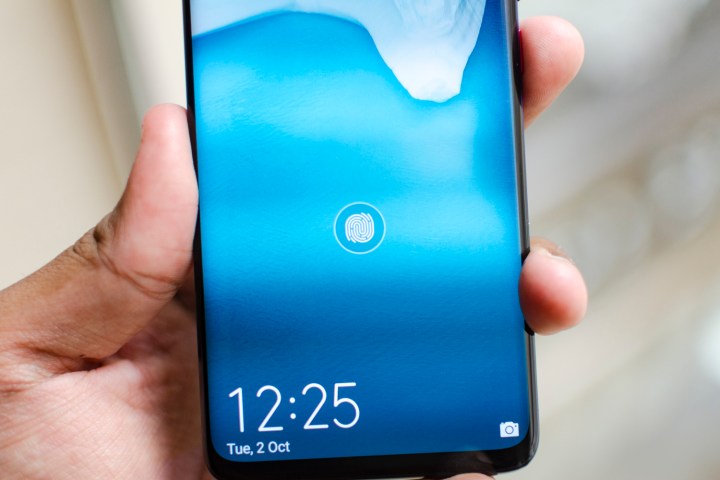
When all is said and done, you can’t go wrong with either of these phones. But since this is a specs comparison, we have to give the crown to the Huawei Mate 20 Pro.
In addition to having a beefier processor and battery, the Mate 20 Pro also offers impressive advancements like 40W charging and reverse wireless charging. And we’d definitely be remiss if we didn’t take the camera module into consideration. The Huawei P20 Pro produced some of the best photos we’ve ever seen from a smartphone.
Editors' Recommendations
- Here’s our very first look at the Samsung Galaxy Tab S9 Plus
- The best Samsung Galaxy S20 deals for December 2022
- Huawei’s Mate 50 Pro is here with an insane 200x zoom
- The best Samsung Galaxy S20 FE screen protectors for 2022
- The best Samsung Galaxy Watch 5 Pro screen protectors

